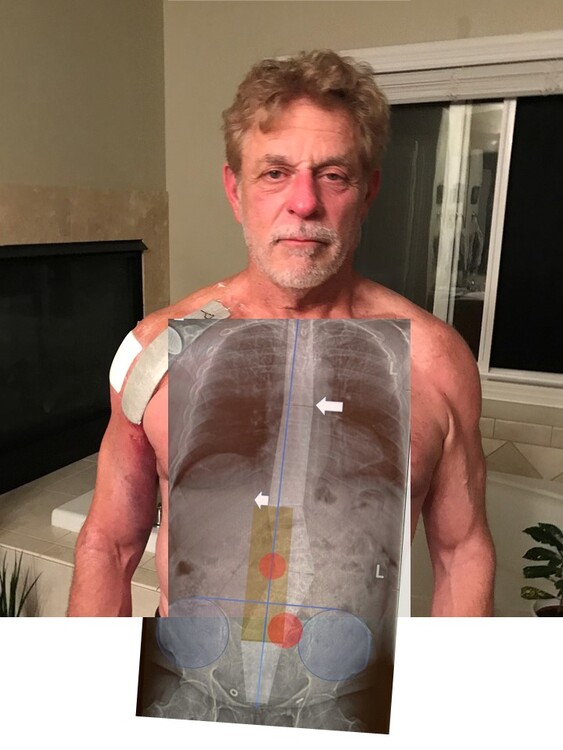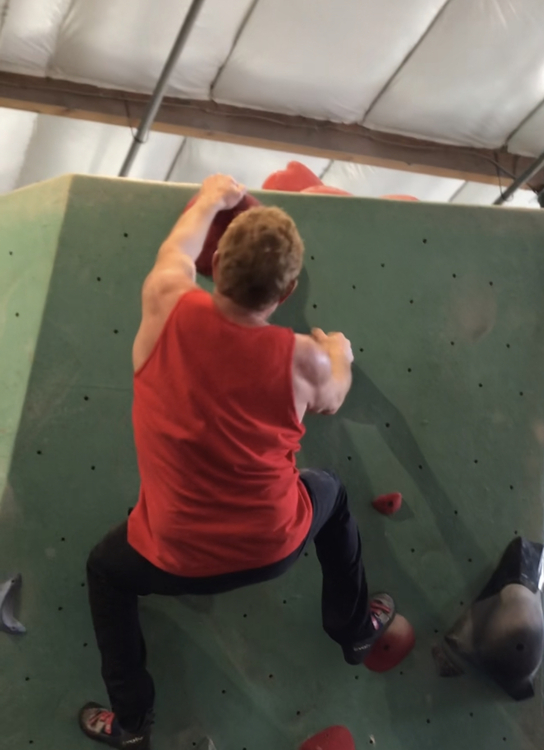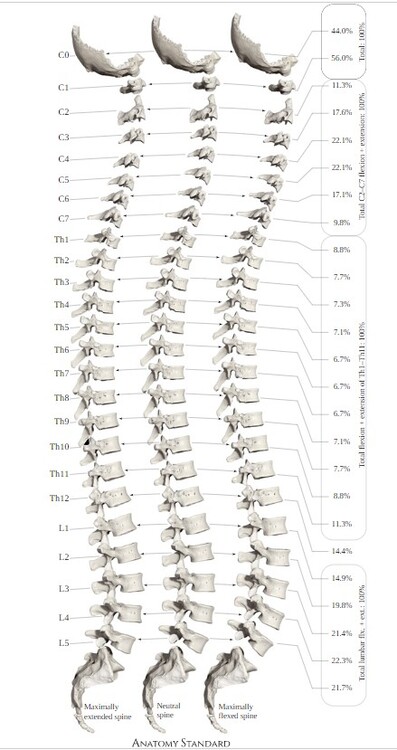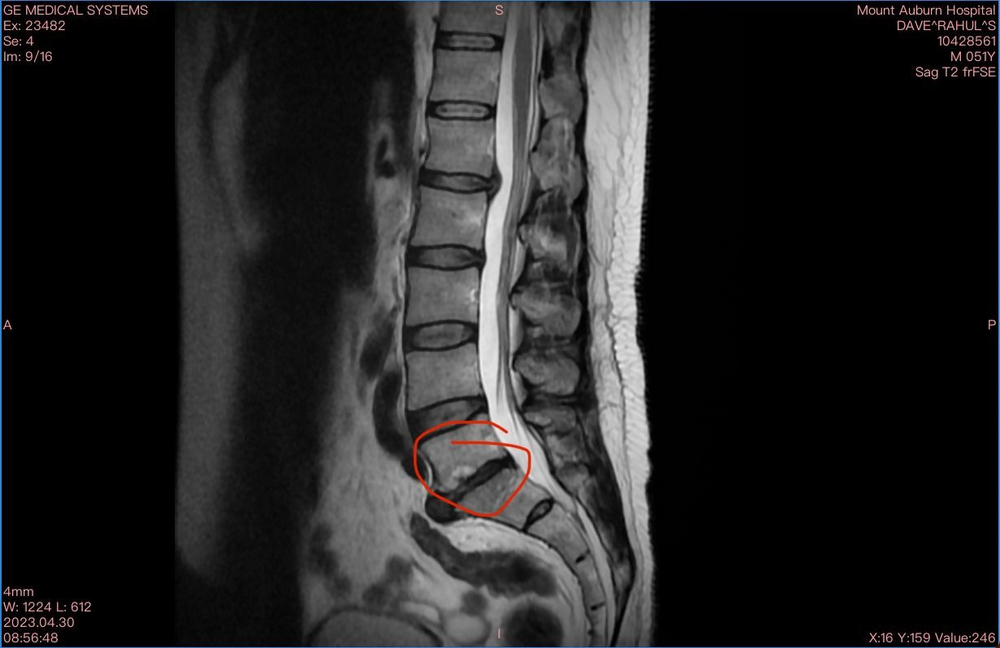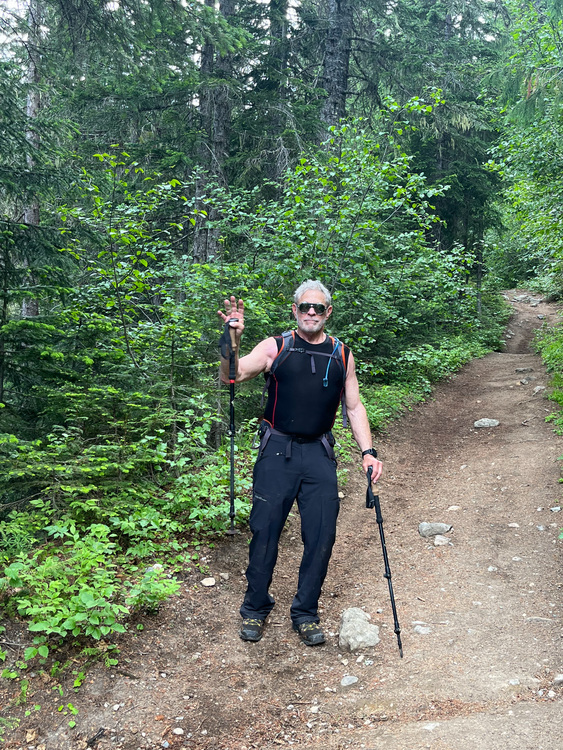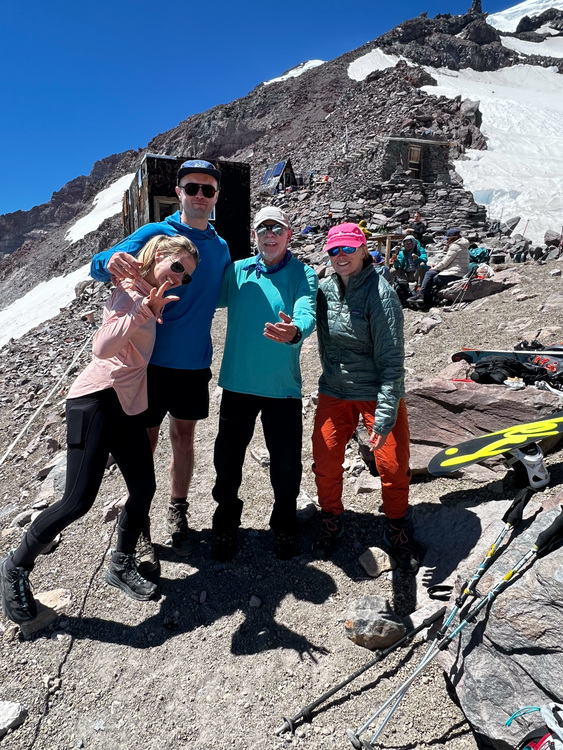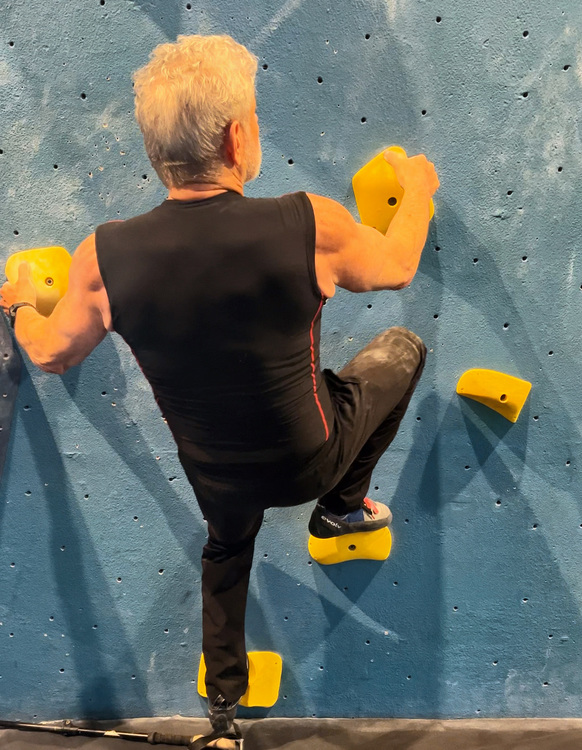Anyone here with a lumbar spinal fusion? How's the climbing and backpacking now?
|
|
Hello all, I was involved in an accident and decked from ~30ft. I'm SUPER lucky to be alive and not paralyzed. I did fracture one of my lower lumbar vertebrae in the process (L5 burst fracture, ~25% loss of bone height). I avoided surgery for a year in hopes that it would heal on its own (spontaneous resolution is what they call it). A year later the fracture got wider and the bone was losing more height (it was compressed tp 45% on the latest CT). At that point I was forced to have the spinal fusion surgery. They fused my L4-L5-S1 with 6 screws and 2 rods. I'm 6 weeks post op now and I'm on the mend. Does anyone here have any experience with a lower lumbar fusion? Personal or anecdotal?
Thank you in advance for any stories you share! |
|
|
Hello! I was dropped 5 years ago from a height of around 43 feet and burst fracture my (L1). I also had to get two rods and 8 screws in my back, two spots above and two spots below my L1. It was in October and I was back climbing by February. My lead head took a while. I also sought counseling to deal with some of the other side affects. The physical therapy didn’t really help, because I would go to the gym and work out a ton, working on my core and participating in yoga to help flexibility. But, I would say take it slow. The physical takes time, but you can ramp that up pretty quick. The mental takes the longest time and I would go easy. I’ve taken some falls and have gone back to bouldering, leading (sport and trad). A couple years later I went and guided out in Devils Tower, Wyoming and it felt really good to be in that element. I also was carrying 50,60,70 lbs packs up and down approaches. Being mobile (bend lifting and twisting) takes time. Go easy and let your muscles build up. I would highly suggest yoga. It is nice to keep muscles and everything flexible to regain some mobility. As far as working out, I actually became stronger from it. Seven months after my accident I was doing 3 mins planks with a 45 lbs on my back. So, I felt like there was some strength to help over come limitations. Let me know if I can help in anyway further! |
|
|
Took a 50ft grounder and broke L1-L3. L2 is a goner and caged L1-L3. You’ll have pain, but you won’t hurt yourself. Your strongest part of your back is the metal. It’s been 18 years I think, I have pain but nothing but staying in shape and just staying of the pain meds has been my mantra. I run big distances, I whip a lot climbing, I wall climb, and I do everything like I used to. I get flare ups with insane amounts of pain, but it always stems from me being out of shape. If I maintain fitness, I’m good. I fuck up and relax then I hurt. Stay tough, work out, and don’t be afraid. Don’t limit yourself and you’ll do great. |
|
|
Do you know the #1 cause of back surgery? Back surgery. I don't tell the whole story because I've learned over the years that I get mixed emotions as people either don't understand or pity. Either way it's annoying so I just keep quiet. I'm inspired by your post because you asked good questions. First some brief history. I was hit by a car going 45 mph in 2016 and had an L1 burst fracture with cord compression that caused right leg paralysis. I also had a severe TBI, lung collapse, shoulder, clavicle and many hip fractures with internal bleeding. I have traumatic amnesia and don't remember anything. My first memory/hallucination was on day 10 in the ICU. I was in the ICU for two weeks and brain rehab for a month. I should be dead. The vertebra above and below L1 were also fractured. I'm fused from T10-L3 with L1 decompression (so I'm shorter now too), L3-5 laminectomies and epidural hematoma evacuation. 18 months after recovery my C5 disc ruptured so I had to be fused from C4-C7. Now 1/3 of my spine is fused. 6 months after that my L5 disc impinged on my nerves and again my leg went numb. The pain was enough to consider putting a bullet in my head. Because my lower fusion ends at L3 the lower bones and discs are under a lot of stress daily so eventually I will have to get those fused. Answers to your questions: Do I take whips? Yep. I think whips on lead are really good for your head. When the hip surgeon thought my hips could handle climbing I went out nearly every day no matter how much it hurt. It was more painful to know how to climb but not have the strength to pull the move. I knew that even when I failed, tomorrow is another day to try again. I started on TR and my first lead was at Valley of the Chickens in the Platte because there are some easy 5.5 trad leads with good gear. My first legit whip was at Turkey Rocks two years ago on Straw Turkey. Bouldering. I was never a boulderer but I took a bouldering class in Washington after climbing Kautz Glacier on Rainier in 2018 and the first thing the instructor taught was how to fall. Eek. My physical therapist has advised against jumping, landing hard and wood chopper type moves to prevent another disc blow out so I stay away from bouldering. Heavy backpacks. This is a good question. My shoulder surgeon said that I would probably never be comfortable with a heavy backpack again because of all the metal in my body. I found the right backpacks that fit my body and I can carry heavy loads all the time all day long. I like the Deuter and Hyperlites. I carried 45# up Denali from camp 11-14,000 without issue. Once in a while I will get these electrical zings across my lumbar and I know that's from the disc compressing and hitting the nerves. Have you ever stuck a 9v battery to your tongue? It feels like that. This happens when I get lazy with posture and slouch while hiking with a heavy pack. I always carry sticks now and make sure my chest is lifted, shoulders back and hips tucked. It's exhausting at first when you get out and start hiking to constantly think about every single step however over time you will learn to be a compensatory master. When did I start to feel normal again? Pre accident I took every thing for granted. Post accident every day is a gift and the only secret I have is to just keep moving. I'm nearing the 50 yard line in life. I'll be 47 in a couple months. I'm not as bold or fearless as I used to be but I am as strong. Another exhausting exercise my PT advised is to squeeze my lower abs if I bend over and pick up a pair of socks. He says that the discs slip and if you do the kegel it helps support the spine. The most difficult recovery I had because of the back injuries was getting my core strong again. The nerve damage and regeneration is a constant struggle. Sometimes I just can't feel certain parts of my back, leg and right foot. My right foot will shake sometimes at certain angles and stress loads while I'm climbing so I'll change the angle or the load. Yoga has been extremely helpful and I do it daily. Yoga with Kassandra on YouTube is my go to. I climbed up Lady Liberty in the Platte a couple days ago and thrashed my way up the off widths then posted this picture and said, bring your guns! If you want something bad enough you will find a way to make it happen. Move daily, stretch, hydrate and don't be lazy. To get to where you want to be you have to accept where you are. Be thankful that you can do squats to pick up those socks! |
|
|
Lots of good info in the replies, and glad you're OK in the larger sense. Short version is that you'll be fine if you're dedicated and reasonably tough (those two tend to go together). It's amazing how easy it is to get lazy with rehab and body upkeep, and I have spells of multiple days on end or even a week where I neglect my exercises, but then I feel so terrible in body and mind that the self-loathing becomes action and I get back at it. Don't stop. And when you do, get back at it. Body maintenance becomes like a part-time job, but just look around and you can see what happens if you neglect to take care of yourself. I'm fused at L3-4-5 (and one ankle, but different ordeal). Mine were two different surgeries, L4-5 in 2005, then 3-4 in 2016 (origin was a childhood injury + years of beating on it). As someone said, it's true that spinal surgery often begets more spinal surgery, especially with fusions because the surrounding levels absorb more impact once that shock absorber (disc) between vertebrae is gone. That said, sometimes it's necessary. So congrats on getting fixed-up, you gotta be a freakin superstar of devoted PT/body maintenance. You can definitely keep climbing full-on. I'm by no means alone in having done a lot of climbs since my surgeries, including reasonably big alpine routes, carried decent sized packs, taken leader falls, all that. Granted, I rarely carry more than 40 pounds in a pack, but part of that is because of desire (heavy packs suck). Same with bouldering, which I avoid, I've never been super into it and I feel too beat up to hit even padded ground each time. Besides, I hate techno music. But I can honestly say that my fusions haven't held me back. Your body is phenomenal at adapting, you just have to enable it with the work that you do. Get good PTs, ones who understand athletes -- most therapist are for people whose activity levels involve walking to the mailbox. Or aspire to golf, good lord. In all my spinal rehab time, plus years of reflection, and the ongoing daily line I walk between pain and happiness/activity (when I'm diligent I'm rarely in deep pain anymore, but dealt with serious chronic pain for years so I certainly know its insidious nature), I think the physical rehab stuff can be roughly divided into two categories: strength and mobility. For strength, aka in this realm "stability," remember that your core isn't just abs. I was shocked when, with my first spinal surgery, a climber PT told me "your core is weak." I was like, "I doubt it." But it's the deep spinal stabilizers -- specifically the transverse abdominus and the multifidus -- that "turn off" and stop firing with spinal injuries. First session of working those muscles left me sore in places I didn't know I had. But those muscles are irrefutably key to spinal stabilization -- tons of research has been done. BTW, the TA is what they target in Pilates class, and I later realized that much of my PT was kinda glorified Pilates. Pilates can have a cult-like feel to it (all praise be to Joseph Pilates!), but it works, and is fantastic for spinal stabilization -- especially down low, where yours is. It's good stuff. Mobility -- people have mentioned yoga, which is great, though might need caution with some poses. I kinda came up with my own little mobility routine, based on a mobility routine on Uphill Athlete's website mixed with my own ideas and help from a local PT here (Rob Scrivner) who's young, smart, up to date on the research, and a strong climber himself (i.e. try to find people like that!). My routine, i.e. "wiggling around," is immensely helpful. Rob and another physician friend have told me there's lots of fairly new research about movement being incredibly helpful to mitigate or prevent chronic pain, and keeping the local biochemical environment "happy" in injured areas. Once again: keep at it (but wisely). Guess I'd add a third category, which is prevention. By which I mean just being smart about wear & tear. Make sure ya have lots of pads and good spotters when bouldering (obviously). Try to avoid doing too much stupid high-impact stuff unless it brings you great joy. That's always a trade-off. For me, I used to love trail running, second only to climbing. But it just beats on me too much with so many injuries and worn-out joints, and so I've come to view my body's joints as a pair of 60,000-mile tires. I can use those miles however I want, but I can't likely get them back (barring new technology). So I don't run anymore, but I ski tour nonstop in winter (no impact), mtn bike (cautiously...that can be very high impact), and climb as much as I can because nothing makes me as happy. I save those miles for when I want to do big routes that involve lots of hiking/descent pounding, and I try to take good care of myself before and after, and recognize that feeling beat-up or even in some pain is still worth it in those cases. You will become a master of balancing these variables. Be smart and diligent. Good luck! |
|
|
You all have been awesome for taking the time to write out some very well received words. It's so great to hear that all of you have returned to normalcy, albeit it takes some work and effort to maintain that normalcy. I understand that for the rest of my life I will have to keep up on taking care of my body, and undoubtedly I will STILL have days of back back pain. It's like that now, some mornings are great, others I wake up at wee hours of the night from back pain. THE LESSON I'M HEARING (From y'all and multiple people who are on the other end of this): Be vigilant on your PT in the acute phase and the ongoing maintenance phase in the years to come. CORE CORE CORE. And then more CORE CORE CORE. It has been 14 months since the accident (2 months since surgery) and I'm FINALLY able to start PT now. I had my first session a few days ago. They have me on some very easy stretches and mellow strengthening routines. They are super conservative exercises for this first month, my 73 y/o mother could do this routine with me. But I get it, my bone hasn't fully grown in yet and they just want me to EASE into things. Due to my movement restrictions, I don't think I've broken a sweat in a year so it was nice to finally get my breath going again. There's also the mental health struggle from all of this. I had so much of myself wrapped up into climbing. My identity as a person, social circles, weekend activities, all revolved around climbing. In an instant I wasn't this person anymore. So I hope you all had good social supports to get you through your injuries. It saw a few therapists and a psychiatrist and I just I'm finally starting to feel like a whole person again. This is definitely a "first world problem" type thing and I'm extremely privileged to worry about this, but doesn't mean that its still not a struggle. Also as a side note: Without exercise it is SOOO hard to maintain a healthy body weight. I gained ~25lbs since this happened. It is difficult to limit myself to ~2000 calories a day as a sedentary person (no climbing, no running, no yoga, etc). Some people just don't have the time for exercise (kids, work, life, etc) and I find it just dang impossible to eat like a bird. I'm hoping that in ~2 months I'll be able to top rope in the gym, which would be a momentous day for me. Take care y'all!! |
|
|
just tack on-the best way i’ve found to go about things in terms of spinal injuries is to just to be careful and easy on yourself. no one’s spine is going to heal the same way and so many external factors can make differences in how you heal. when i first started climbing post back surgery, i started super easy on TR, and then took very small lead falls until it felt okay to push it a bit. the same with bouldering, although i generally never fall from the top indoors if i can help it. it’s never gonna feel completely normal, but the things people have mentioned previously are probably some of the best you can do. |
|
|
I wrote the following on a TR about climbing Colorado's 14ers in winter. "...While searching for purpose the arc of my story went from a competitive athletes dream playground to mastering technical skills to a false sense of confidence because success was often high, to a heyday and greed that fostered fearlessness to sadly being nailed to a cross then a long period of doubt therefore I might be to the great comeback and finally to just being satisfied with mediocrity. Writing all this is to inform that being able to come back after significant injury to me is a greater accomplishment than climbing all the mountains in the world. As a patient with lack of control, immense fear and incredible helplessness; when injured in a deep way one contemplates suicide but I prevailed. I feel it's not what we go through but how we go through in life that makes a difference. As Bob Dylan said, life is not about finding yourself or finding anything, it's about creating yourself and about creating things. Truth. But to me life is about creating things with the people you love. Climbing now after my accident the end lesson I've learned is how I'm insignificant and I feel this not for sympathetic purposes but for learning about ego, my ego. Climbing mountains is easy and is not that hard considering someone with brain damage and considerable handicaps can do it. And although I haven't been fired or divorced yet, I want to be happy but first I must be strong. This is a story about my accident: https://leader.pubs.asha.org/doi/10.1044/leader.EL.22102017.np I love climbing mountains and the metaphorical mountain I climb along the way is my life long lesson. Rather than living in the injury and becoming my diagnosis I decided to set an intention to overcome fear. Why do I climb? Mountains challenge me mentally, physically and emotionally in a way few other experiences in life do. We live in a constant state of daily comfort with temperature controlled rooms, heated car seats and hot coffee available on nearly every street corner. While climbing I deal with a constant state of discomfort and learn to control the hierarchy of needs so I can safely get up and down the mountain while working with all that is weak, lazy and fearful within. Climbing significantly changed my life for the better and continues to do so. The skills I've acquired, the places I've been the few people I've shared these experiences with over the years have allowed opportunities to satisfy my spirit. We were made to do this!"... Bryan you are brave to write about and ask about mental health, which none of us mentioned. All the things I wrote above I learned from therapy. There is this stigma about mental health therapy and from my experience we should celebrate those that are strong enough to talk about and seek it! Taking care of our mental health is just as important as our physical and spiritual health. If you'd like a therapist recommendation, I'm sure a few of us could chime in. |
|
|
I will say one benefit of having my accident is before I didn’t really know myself that well. But, after spending countless days, months, where I was by myself for a good chunk of the day, allowed me to really get to know myself better and stop living on auto pilot and think about what was important to me. Where I wanted to go and do with my life, was I happy with the trajectory of my life, who around me was healthy for me to be with. Also, through many sessions of counseling working through my accident trauma, but also parental and living trauma, was really important for me, even today where that work continues. I actually came to see that I had anxiety and dealt with depression before my anxiety and those moments of, “why am I really sad and lethargic or why is my chest so tight” finally had an answer. So, my accident was a blessing in disguise in a lot of ways. Of course, there were really dark days and questioning God (yes, I’m one of those…), but it truly, as I look back four years ago, was ugly and messy and lots of tears, but yet really beneficial to where I am today. So, I’ll end with this, my accident and like a lot of others here could have ended with death or been severely handicapped, but we are survivors of a really intense traumatic experience. If you do the work, seek a qualified trauma trained counselor, maybe who specializes in EMDR or CBT, and give yourself a chance to grieve and not feel like you need to “pull up your bootstraps” just to get back to what was, then you might grow from a truly special experience. I think grief plays a part as well, so grieve what was, and then look for ways to not return to “normal”. Look for ways to engage in this time to build back better in all the -ally ways. Emotionally, spiritually, physically, and mentally. -Aaron |
|
|
I'm fused from T11-L3 as a result of an ~25' fall. Being vigilant and not pushing things too hard before your fusion heals is of the utmost importance, and then core work will really help with stabilization/protection of the spine, and of course that helps with pain. I'm pretty lucky to not really deal with chronic pain, but I had my accident at 21, and I'm 25 now, so youth may account for some of that... When it comes to climbing--it's safe for me to whip and take bouldering falls. If I take too many falls from high enough up onto a firm mat, it can kinda screw up my back for a couple days. It is important to be mindful that the vertebrae above and below your fusion have to take on more impact than they did pre-fusion, and the cumulative effects of hard falls could result in issues with those vertebrae down the line. As far as backpacking/heavy gear, most important thing for me has been making sure that stuff fits really well and switching to shoes with a low heel/toe drop (like 5mm or less). The shoe change was the biggest factor for me--found myself getting achy fast on hikes/approaches/running, and that resolved as soon as I switched shoes. If you're not already on the low-drop train, it can take time for your achilles and calves to adjust. Flexibility-wise, I grew up dancing and have done yoga for years, so I had pretty good baseline flexibility, but it did take a while just to get back to touching my toes. Turns out a tight lumbar spine (even if it's not fused) results in tight hamstrings... I did a lot of legs-up-the-wall for a hamstring stretch that was easy on the spine. But just mechanically I could see it being harder with the lumbo-sacral fusion than the lumbo-thoracic fusion. The mental part of recovery was (honestly still is) the hardest part of the ordeal for me. Everyone has their own timeline and their own struggles with respect to that. At first I was just focused on feeling like myself/getting my life back again. I was super excited to get back to all my normal activities, and then when I did, I found myself really struggling with fear--not trusting my body, not trusting myself. Not even just when it came to climbing--pretty much any kind of solo adventure suddenly felt overwhelming. Being so dependent on others in the initial recovery really screwed with my sense of self. But I got all the activities that made up my life back, I got a lot of myself back, a deeper appreciation for all of it, and while the fear is still very much present, it has only gotten better with time. Recovery isn't linear, but it's generally trended upwards. |
|
|
BryanOC wrote: I had an accident and had a full wedge fracture of L5 which I had removed shortly afterward and replaced with a titanium cage. L4-S1 are fused and I had some disc problems. It was a long recovery for me but I was a city guy who was working for a record label scouting bands and drinking a lot so I didn't do any exercise. About 5 years later my doctor told me I had to start doing walking if I wanted to really get better. To cut a long story short, I loved walking and have since moved to a mountainous area in Scotland and ended up taking up climbing (trad, sport and winter climbing) and I seem to be able to do pretty much anything without major issues. The main issues I get are around the discs above the fusion and also the lack of lymph drainage around the area. I go to a physio oriented osteopath once a month and that has helped loads. I'm currently training toward my Mountain Leader qualification and the 6 day continuous outdoor training programme was a challenge (well - at 55 it was, perhaps the back wasn't the issue!) but my body seemed to cope well. Hope that bit of context helps.. |
|
|
Here goes. I'm 70. And I am still climbing. My age is my license to be utterly mediocre, like V0-v2, but I no longer need to be good to have fun. I'm getting an S1-L2 fusion in three weeks. I wish it was from climbing accident with a good story I could tell, but it's just an accident of birth. My photos tell the story, my scoliosis has progressed to the paralysis point, so I no longer have a choice. Not to mention how ugly it looks for my entire upper body to be positioned over my left leg. My question is this. For everyone out there in the climbing community who's had a fusion, and then kept climbing, what was the loss in your range of motion? And how long did your recovery take, as in, from off the table to your first climb? |
|
|
Mark Elliot wrote: Right on man, I hope to be as active as you are when I'm your age. Goals!! About you needing the surgery, I'm sorry you gotta go through with it. I hope it goes well. About the range of motion, you lose a good deal from fusion of the lumbar vertebrae. With just my S1-L5 it's just a slight struggle to put on socks, or wash my feet in the shower. You feel it, but you'll manage. I have yet to climb. I just got cleared to do gentle yoga at the 6 month post surgery mark, which means they lifted some of my bending, lifting, twisting restrictions (BLT's). Here's a good chart showing the ROM for each vertebrae. https://www.anatomystandard.com/biomechanics/spine/ROM_Vertebrae/Flx-Ext__Illustration_Ratio.svg https://www.anatomystandard.com/biomechanics/spine/rom-of-vertebrae.html |
|
|
I had L3/L4 fusion about five years ago in response to arthritis and disc degeneration, not any specific injury. In general, the surgery was successful and I’ve been able to climb with only minor impediments. Sure, I’m reluctant to jump off boulder problems or take similar impacts, but that’s just being smart. I’m able to carry a normal climbing pack without restrictions and can handle a heavy pack of 50 to 60 pounds for at least a couple miles. I also take care of my back with stretches, exercises, and massage, and am careful with how I lift heavy objects. A complication is that the fused vertebra result in additional movement above and below thereby increasing stress and pain in those areas which is expected. In summary, I feel the surgery was successful with only minor complications and restrictions, and a big improvement over the pre-surgery condition. |
|
|
Wow, this thread is both horrifying and deeply inspirational. Amazing that you all are doing so well. |
|
|
I’m contemplating surgery right now from a degenerative l5-s1 with reduced height: lots of direct back pain with radicular symptoms. I’m not a very good climber: mostly climb upto 10c in the gym and 9 on trad, but desperately want to get back into it, backpacking, and skiing. Thanks for this thread and would love any and all advice: including, don’t fuse! Here is a pic of the carnage: there was no accident, so I have no clue what caused this! |
|
|
I'm 70, and I had a multi-level lumbar fusion S1 to L2 in March. This is what happened.
My rehab looks like this:
My status at 5 months post-op:
Was it worth it? Hell yes. I suck now, but I will keep improving. Without surgery I was on the road to paralysis, pain and deformity. My dream of climbing the fourteen 8000 meter peaks will have to be adjusted. My new plan is to go half-way up all of them. |
|
|
Hello, everyone! Thanks for sharing your experiences, and wisdom. I am going to ask for more! I had surgery three months ago to correct spinal stenosis/spondylolisthesis (runs in my family) and was fused L3-5. I am 66 years old and the first in my family to actually have the surgery; I watched my late aunt and grandmother suffer such chronic pain for years without surgery and decided to take a different path. I've walked, recumbent biked, but not much else during this first phase per surgeon's orders, but finally have clearance to do PT/strength training and reformer Pilates. My muscles are weak and I need to build back! I am an Ashtangi, with a practice of 20-years plus, but advised to stay away from fluid practice for now and concentrate on static poses and watch the twists and backbends. If anyone has any ideas for me, other than those mentioned in previous posts, for routines/approaches, I would appreciate sharing. I also practice pranayama, which helped immeasurably in the early days after surgery. You are all accomplished hikers/climbers! I am at a completely different crossroads and need your help: I would like to START hiking as a hobby. I live in southwestern Vermont and want to take advantage of the beauty around me. I am not out to break records, but would like to start sensibly and be able to build over time. Having some idea of the surgery I've recently had and — hopefully — lots of knowledge about how to begin (in your cases, again) after surgery and what equipment I need, can you give me any suggestions about how to get started? Thank you for reading this and your consideration. Joy |
|
|
Joy Loewe wrote: Hi Joy, I had an L3-5 laminectomy and fusion a little over a year ago. My situation is somewhat different from the other posters because I'm (now) 77 and no longer climb outside or haul heavy packs for reasons that preceded my back problems. I'm very happy with the results of my surgery. I was able to resume walking almost immediately and resumed gym climbing about 4 months post-surgery. Aside from doing PT with a knowledgeable physical therapist, I think the absolute best exercise is to walk as much as possible. (Same prescription I got after my hip replacement.) Hiking is, IMO, the perfect hobby. As for equipment, I recommend trekking poles to help with balance on uneven or hilly terrain. Especially during the early months, when my bones were still knitting, falling was not an option. |
|
|
Hi, I’ve had similar experience to many. 25 foot ground fall, fused T11-L4. Anyway i have been advised against high intensity activity due to later possible surgery of adjacent disc degeneration where rods end and wondered if anyone who was getting back after it with climbing was also being advised against it and was climbing anyway or if they were being advised that climbing was okay? Also if anyone had any thoughts about the risks of potential future surgery and the relationship to their own activity level would be extremely helpful. I’m a couple months post op and know theoretically my body could go climb but I’m just trying to understand potential risks and longevity especially as I am only 27 years old and want to maximize long term mobility while also having a full and active life. This feed was super healing to see as i have felt quite alone and sad about my accident, best wishes to anyone else who has had to go through this. |
|
|
Carly Vroom wrote: I'm 27 now, and 5 years out from surgery (T11-L3). I do it all still (boulder, sport, trad), and I run and do yoga. I definitely worry about adjacent segment disease, but my neurosurgeon gave me the go-ahead on climbing post-op. He wasn't crazy about the bending and twisting in yoga (I modify). His advice was pretty much "don't bungee jump or skydive, and maybe don't pick up rugby or power lifting." I just got some x-rays done to get a sense of the current state of things, and can report back, but so far so good. If you're just a couple months post-op, maybe avoid bouldering and lead falls and stick to top roping... I probably gave it a solid year of TR only. |

 Continue with onX Maps
Continue with onX Maps Sign in with Facebook
Sign in with Facebook























